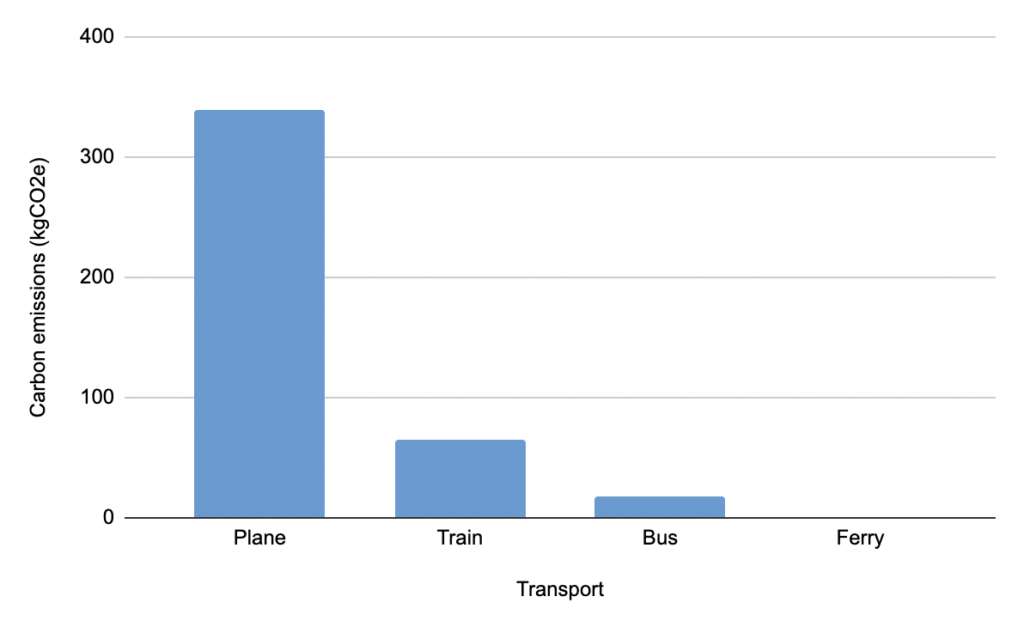In 2010, we took a short break between finishing our Master’s degrees and starting our PhDs to spend 25 days interrailing through Europe. We flew from London to Berlin, then headed south on trains, local buses, long-distance coaches, ferries, metros and trams through Germany, the Czech Republic, Austria, Hungary, Slovenia and into Croatia. We ended our trip in Pula on the Istrian Peninsula and flew back to London.
We decided to calculate the emissions resulting from our travels in order to offset them and to see if there’s anything we could have done differently. Although we’ve taken many trips since 2010, this trip closely represents how we’d like to travel in the future; we journeyed from Germany to Croatia entirely by public transport and we recorded each day’s activities on a blog. You can read the blog series here if you go back far enough (though cut us some slack, we’re not quite so clueless these days). We’re still arguing over whether we ate butter or cheese in the Serbian restaurant in Ljubljana, and we still sing the Budapest metro song all the time.
We started by creating a log of every journey we had taken (including every last tram, bus and metro), capturing both the mode of transport and the distance travelled. It’s been more than ten years since our trip, so this took quite a bit of detective work. We then looked up the carbon emissions per kilometre for each mode of transport. The results were pretty stark.
The two flights at the start and end of the trip accounted for 80% of our transport emissions. We knew flying was carbon-intensive, but we didn’t realise there was such a big gulf between it and other modes of transport. To make matters worse, we’d actually covered a similar distance by air as we did by rail. We were responsible for more carbon emissions during our four hours in the air than during nearly four weeks of travel through Europe!

We could have reduced our transport emissions by 61% by avoiding flying. This calculation is based on travelling by rail and bus from London to Berlin and from Pula back to London. These journeys would obviously have taken longer, and also would likely have cost more money too.
While it makes most sense not to emit the carbon in the first place (particularly on avoidable short flights in Europe), we can’t travel back in time to change our decisions. Instead, we’ve offset our emissions via Gold Standard’s Climate+ Portfolio, and you can find the retired carbon credit in the Gold Standard Impact Registry. This means that as much CO2 has been prevented from entering the atmosphere as was emitted as a result of our travel. The Climate+ Portfolio achieves this by supporting a variety of emissions reductions projects – from clean cooking solutions and household bio-gas to renewable energy, like wind and solar.
If we were to do this trip again, would we do anything differently? Absolutely. In future, we’ll need to make the most of travelling slowly (and accept that we’ll sometimes pay more) if we want to commit to low-carbon travel. Definitely food for thought.